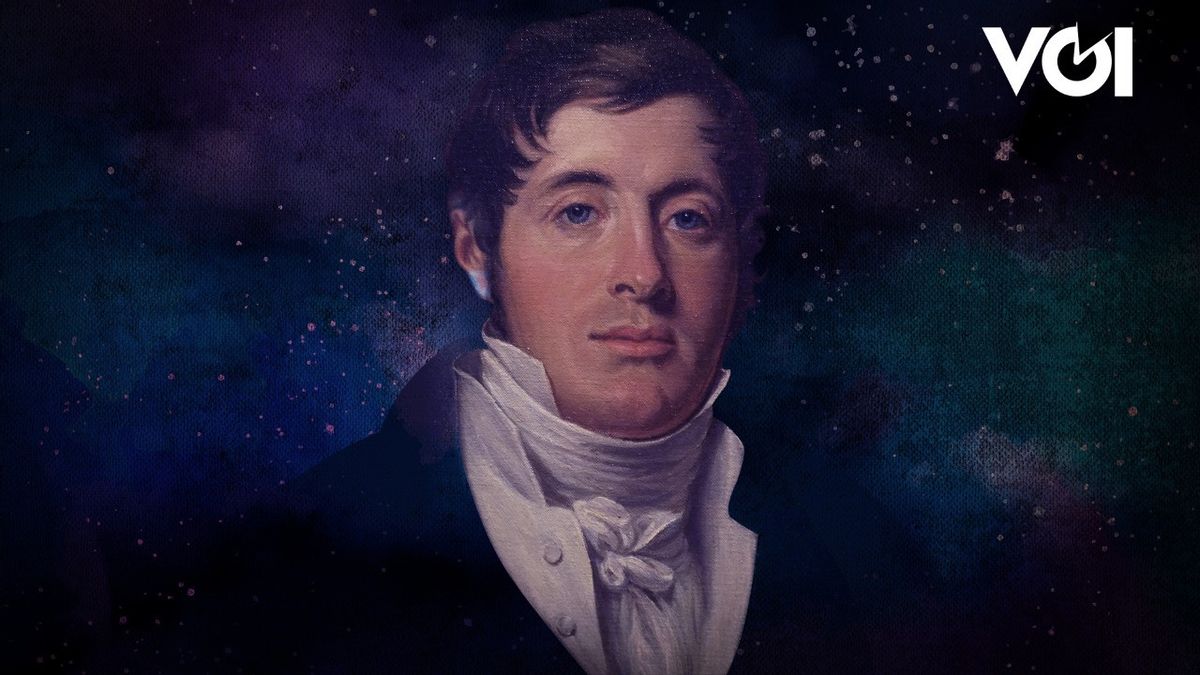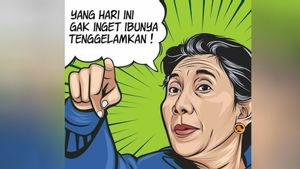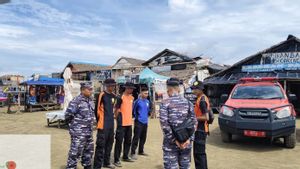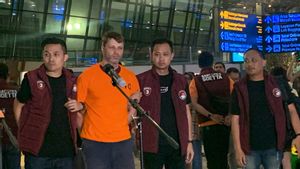JAKARTA - The gait of the Governor General of the Dutch East Indies, Thomas Stamford Raffles (1811-1816) was quite large. He is not only an extension of the British arm in Indonesia. Raffles is a charm. Raffles, who was 30 years old at that time, succeeded in convincing the British trading partnership, the East India Company (EIC) that Java was a "Land of Hope." At the same time, his interest in science was on the rise, especially in the world of antiquity and Indonesia's ancient history.
Raffles was born aboard the slave ship "Ann" on July 6, 1781. Nobody predicted that his life line would become an influential intellectual. Raffles' greatness was detected since he was 14. In his adolescence, Raffles had to replace his father's role as the backbone of the family.
Raffles works hard in his service to EIC. He knew there was a mother and four sisters to support. Raffles did indeed drop out of school. But that doesn't mean he has stopped learning many things. Wonderful. The scope of knowledge that Raffles studied was wide enough to touch science, language and history.
Long story short, Raffles' interest in knowledge became more and more when he became friends with John Casper Layden. The friendship began when Raffles became Assistant Secretary of the Governor of Penang (Malaysia) in 1805. Quoted by the Hannigan Team in the book Raffles and the British Invasion of Java (2015), it was from his friendship with Layden that Raffles was impressed by Leyden's knowledge and thinking about the Dutch East Indies.
The proof is that the day after day the intensity of the discussion between Layden and Raffles is getting bigger. Starting from the discussion of the story of eastern philosophy, slowly began to touch the Asian literary tradition that is as difficult and complex as Greek philosophy. As a result, Raffles was quickly able to hone his knowledge of the Malay language and try to learn about local history.
“There must also be casual talk about a project that is often discussed but has been delayed for a long time to win the VOC crown jewel, Java itself. However, it was in his conversation with John Layden that Raffles first thought of Java as the Land of Hope. The place where all his dreams of glory can finally come true, "said Tim Hannigan.
In the end, Raffles' dream of setting foot on the archipelago was realized. Lord Minto, Raffles' superior, had the intention of expelling the Dutch from Java in 1811. As a form of seriousness, 12 thousand troops were deployed to Batavia via the Cilincing port. We once reviewed it in the article History of Cilincing, An Important Area in North Jakarta.
The British army at that time consisted of almost as large European and Indian regiments. Within a few days, the Company fell under the regiment. In order to confirm the victory over the Dutch East Indies, the British flag was immediately flown on the edge of the Batavia sea area. At that time Lord Minto officially appointed Thomas Stamford Raffles as Governor General of the Dutch East Indies under the banner of British rule.
The History of Java masterpieceDuring his time as the number one person in the Dutch East Indies, Raffles learned new things again. Lots. He pursues customs, local languages, and learns about the natural knowledge and history of Tanah Harapan. Therefore, many orientalists, especially from the Dutch community, acknowledged Raffles' role in the development of studies on Indonesia. Moreover, with the publication of Raffles' masterpiece, The History of Java in 1817.
No kidding. P. Swantoro, in his book, From Book to Book: Connecting to Become One (2002) reveals, although Raffles' reign in the Dutch East Indies was relatively short, it was quite memorable and decisive. It was thanks to this man who was an English national that strong world attention to Inheemse Indie (Indies Indies) emerged. Thanks to Raffles.
"He encouraged the Bataviaasch Genootschap van Kunsten en Wetenschappen (cultural institution) to be active again. At that time the life of this institution was languishing. Raffles pursued the rise of language and ethnology studies. He himself tried to explore the history and culture of Java, which among others produced his work The History of Java, the history of Java, published in 1817, "wrote P. Swantoro.
For this book Raffles received a lot of praise. Dutch historian Peter Boomgaard is one of them. According to Boomgard in his book, Aangeraakt door Insulinde (1992), Raffles' The History of Java is an unexpected and most impressive discovery.
"Finally I dealt with something he told me. And every time I deal with something related to the 19th century, I always check first what Raffles wrote on the matter, "Boomgaard.
Boomgaard added his view that the true Raffles was actually an anthropologist rather than a historical activist. Moreover, the book History of Java seems to present many things. More than history. This book is recognized as an encyclopedia capable of providing an overview of the hidden wealth contained in the archipelago.
Through The History of Java, people get a more complete picture of the island of Java, from its climate, its inhabitants, the legacy of its past, to its history, of course. The History of Java was later transformed into a captivating combination of scientific descriptions of apology and what in modern times has been called "intelligent reporting".
"However, Raffles' works are much easier to read and better written than those of his predecessors (Francois Valentijn, George Rumphius, and Justus Heurnius). And he (Raffles) wrote his work with great sympathy for the indigenous people of Indonesia, which in most of his previous works, unfortunately, was not there, "said Bernard HM Vlekke in Nusantara (1961).
From his position as Governor General of the Dutch East Indies, Raffles probably did not succeed in clearing the problems left by the Dutch. However, Raffles actually became a person who was able to bring fresh air to the Dutch East Indies, including introducing the first Borobudur Temple to the world. Borobudur is almost impossible to see to this day without the intervention of Raffles.
“The contact in these places, Brambanan (Prambanan) and Boro Bodo (Borobudur), are magnificent works of art. The vastness, the area that contains the buildings, which are in some parts covered by lush vegetation, the parts of the buildings that are laid out gracefully and delicately, the large number of statues and carvings of figures that adorn the buildings, all of that makes us wonder why these ruins have not since it was examined, drawn, and given an explanation, ”is written as Raffles's own story in the book The History of Java.
It is this interest in culture, history and art that makes Raffles even more excited to learn Javanese. Presumably, Raffles is the governor general of the Dutch East Indies who is willing to take the time to learn Javanese and has great sympathy for the native people. Therefore, in the next era, Raffles was better known as the author of The History of Java rather than as the governor who introduced the land lease system.
The English, Chinese, Japanese, Arabic, and French versions are automatically generated by the AI. So there may still be inaccuracies in translating, please always see Indonesian as our main language. (system supported by DigitalSiber.id)









